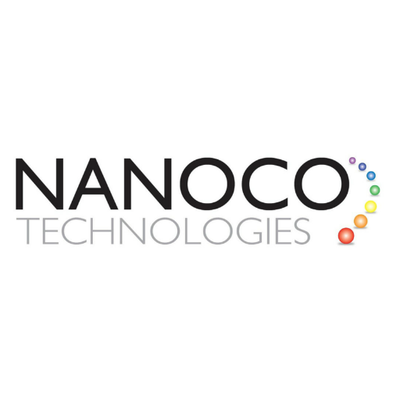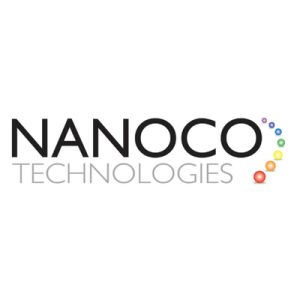Quantum dots, tiny semiconductor particles with unique optical and electronic properties, are transforming various fields. Their ability to emit light in different colours based on size and composition has opened up new possibilities, particularly in medicine. These innovations are paving the way for enhanced diagnostic tools, targeted treatments, and breakthroughs in healthcare research.
In medicine, quantum dots have proven revolutionary. They are used in bioimaging due to their brightness and durability, outperforming traditional dyes, thus improving cell and tissue visualisation for more accurate diagnoses. Their potential in targeted drug delivery allows them to be engineered to deliver drugs directly to diseased cells, reducing side effects and increasing efficacy. Furthermore, quantum dots play a key role in photodynamic therapy, where light exposure triggers their reactive properties to damage tumour cells while leaving healthy tissues unharmed. The versatility of quantum dots enables precision medicine, personalising treatment based on individual patient needs. Mathematics aids in understanding their interactions and applications, improving the overall effectiveness of treatments.
Quantum dots offer numerous benefits in healthcare, such as enhanced sensitivity and accuracy in diagnostic imaging. This leads to more precise biomarker detection and reduced patient discomfort by minimising the frequency of tests and drug doses. Additionally, the precision of quantum dot technologies contributes to cost-effective treatments by lowering hospitalisation rates and streamlining procedures. One practical application is their role in the early detection of breast cancer. Quantum dots conjugated with antibodies can specifically target cancer cells, allowing for non-invasive imaging and early intervention, which significantly boosts survival rates.
In diagnostics, quantum dots enable significant advancements. Their properties, such as size-dependent fluorescent emissions, allow them to be used in multiplexing, detecting multiple biomarkers simultaneously, and maintaining long-lasting fluorescence without fading, unlike traditional dyes. These nanoparticles are also customisable, adapting to specific diagnostic needs by altering their size and emission spectra. Quantum dots, with their exceptional sensitivity, help identify molecules present in low concentrations, making them invaluable in early disease detection. For instance, quantum dot-based assays have improved the accuracy of diagnosing viral infections by detecting specific proteins even at minute levels.
The biomedical applications of quantum dots extend beyond diagnostics. They are used in fluorescence imaging to provide detailed visuals of biological structures, enhancing analysis and treatment planning. Additionally, by tagging drugs with quantum dots, doctors can track the delivery and absorption of treatments in real-time, offering more personalised therapy. Quantum dots also assist surgeons by highlighting specific tissues during operations, reducing risks and increasing precision. Their development is bolstered by mathematical modelling, ensuring that they are designed for optimal use in various medical applications.
Quantum dots are also being explored for the development of biosensors, which can detect disease markers at extremely low concentrations. This proactive approach to healthcare could enable early detection of diseases before symptoms appear, significantly advancing preventative care. The future of quantum dot applications in medicine holds exciting prospects, particularly in gene editing, where they are expected to aid in targeting specific genes more precisely. They may also become a key component in portable diagnostic devices for use in global health settings, offering cost-effective and accurate tests. One potential future application is the integration of quantum dots into contact lenses that monitor glucose levels in diabetic patients, providing a non-invasive method for managing blood sugar.
Quantum dot fluorescence imaging has emerged as a revolutionary technique in medical diagnostics, offering unprecedented opportunities for research. When excited by a light source, quantum dots emit fluorescence, with the emitted wavelength determined by the particle’s size. This feature allows quantum dots to provide bright, stable images, which can be customised for different applications. Their narrow emission spectra and broad excitation range make them ideal for multiplexing, enabling the simultaneous use of multiple colours without overlap. This technique is enhanced by coatings that increase biocompatibility, allowing quantum dots to target specific cellular structures in complex biological environments.
The advantages of quantum dot fluorescence imaging are numerous. It allows for high-resolution imaging at nanoscales, which is critical for observing subcellular processes, and its photostability ensures long-term monitoring without signal loss. Multiplex imaging, where multiple targets can be tracked simultaneously, offers a comprehensive view of biological systems. These capabilities lead to more detailed and accurate data collection, which is invaluable for research and clinical applications. One notable example is the tracking of cancer cell metastasis, where quantum dots are used to visualise the spread of cancer in real-time, enhancing understanding of disease progression and facilitating the development of targeted therapies.
Quantum dots have the potential to revolutionise many areas of medicine, from diagnostics and imaging to treatment and preventative care. Their unique properties continue to open new avenues for research and innovation, making them an invaluable tool in advancing healthcare.
Nanoco Group PLC (LON:NANO) leads the world in the research, development and large-scale manufacture of heavy metal-free nanomaterials for use in displays, lighting, vertical farming, solar energy and bio-imaging.


